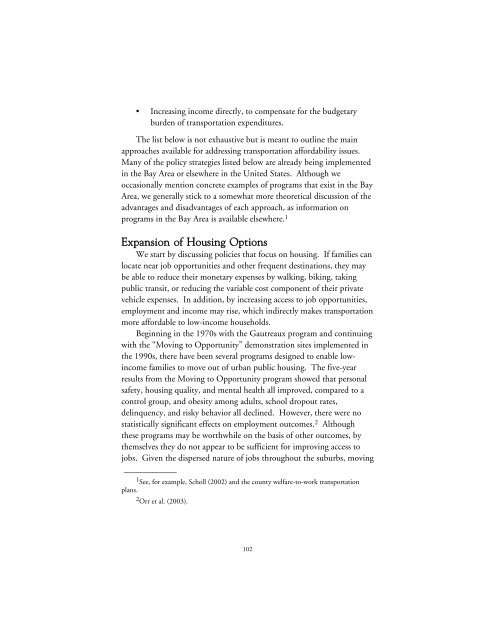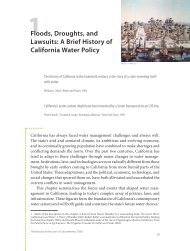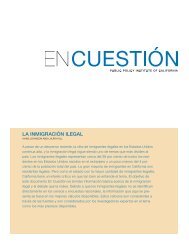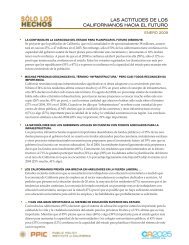Transportation Spending by Low-Income California Households ...
Transportation Spending by Low-Income California Households ...
Transportation Spending by Low-Income California Households ...
You also want an ePaper? Increase the reach of your titles
YUMPU automatically turns print PDFs into web optimized ePapers that Google loves.
• Increasing income directly, to compensate for the budgetary<br />
burden of transportation expenditures.<br />
The list below is not exhaustive but is meant to outline the main<br />
approaches available for addressing transportation affordability issues.<br />
Many of the policy strategies listed below are already being implemented<br />
in the Bay Area or elsewhere in the United States. Although we<br />
occasionally mention concrete examples of programs that exist in the Bay<br />
Area, we generally stick to a somewhat more theoretical discussion of the<br />
advantages and disadvantages of each approach, as information on<br />
programs in the Bay Area is available elsewhere. 1<br />
Expansion of Housing Options<br />
We start <strong>by</strong> discussing policies that focus on housing. If families can<br />
locate near job opportunities and other frequent destinations, they may<br />
be able to reduce their monetary expenses <strong>by</strong> walking, biking, taking<br />
public transit, or reducing the variable cost component of their private<br />
vehicle expenses. In addition, <strong>by</strong> increasing access to job opportunities,<br />
employment and income may rise, which indirectly makes transportation<br />
more affordable to low-income households.<br />
Beginning in the 1970s with the Gautreaux program and continuing<br />
with the “Moving to Opportunity” demonstration sites implemented in<br />
the 1990s, there have been several programs designed to enable lowincome<br />
families to move out of urban public housing. The five-year<br />
results from the Moving to Opportunity program showed that personal<br />
safety, housing quality, and mental health all improved, compared to a<br />
control group, and obesity among adults, school dropout rates,<br />
delinquency, and risky behavior all declined. However, there were no<br />
statistically significant effects on employment outcomes. 2 Although<br />
these programs may be worthwhile on the basis of other outcomes, <strong>by</strong><br />
themselves they do not appear to be sufficient for improving access to<br />
jobs. Given the dispersed nature of jobs throughout the suburbs, moving<br />
_____________<br />
1 See, for example, Scholl (2002) and the county welfare-to-work transportation<br />
plans.<br />
2 Orr et al. (2003).<br />
102











